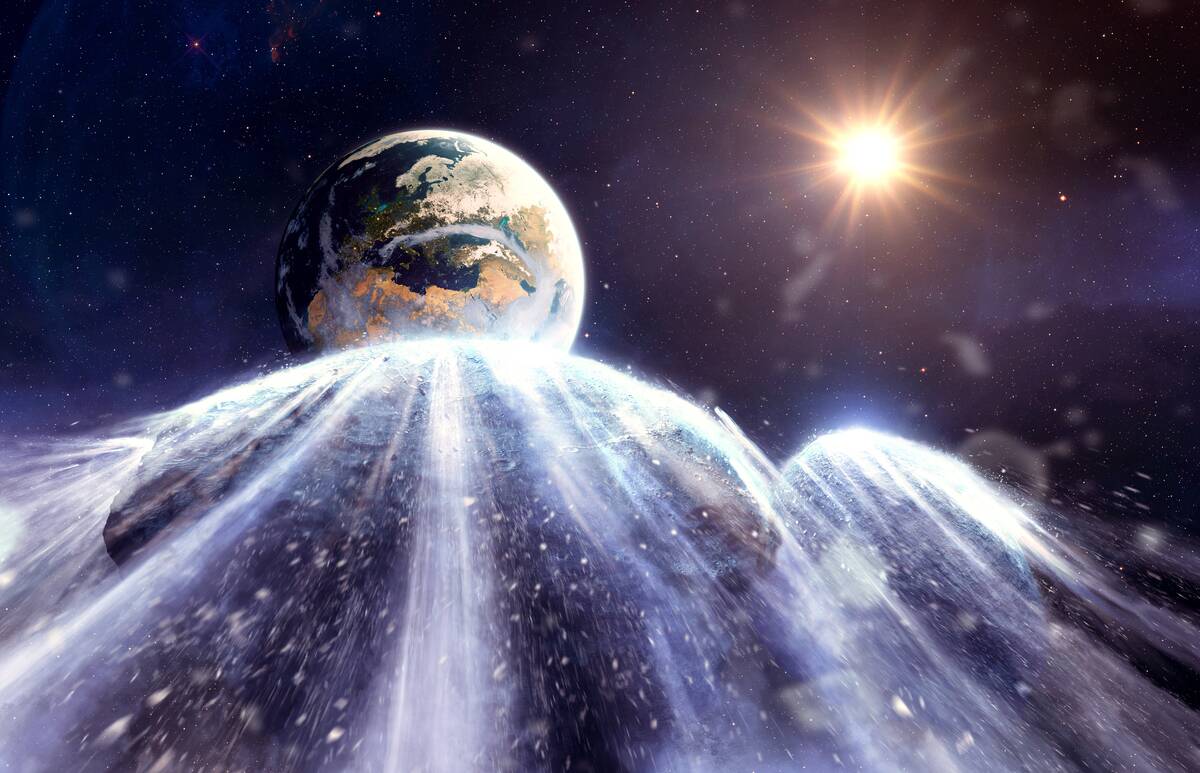Earth Will Be Getting A Second Moon Thanks To Asteroid Heading Our Way
We've all heard news or stories about asteroids flying dangerously close to our planet, a near-collision course that, if pushed just slightly, could have caused disaster. Seeing as they're big hunks or rocks traveling unimaginably fast, it's hard to imagine them not doing massive damage wherever they land.
However, there is a way for an asteroid to approach Earth without it being a doomsday scenario. Rather than colliding into us, it joins us!
Space and the universe beyond our planet holds endless amounts of secrets, but it's not impenetrable. People have been deciphering these secrets for centuries in the form of astrology.
Learn what the mystic art of astrology has to say about you, your life, and your future with a FREE astrological reading. Click here to get started today and see what the stars hold.
Entering Our Orbit

Between September 29 and November 25, Earth will be experiencing a fascinating phenomenon that will leave it with twice the orbital bodies than it currently has. It will be gaining a second moon.
Asteroid 2024 PT5 is currently heading toward us, but there's no risk of collision. Instead, it'll become a 'Near-Earth object,' or NEO. It'll be just near enough to get pulled into Earth's orbit alongside the moon. Only for a little while, though; it'll stick around for about two months before blasting off again.
A Mini-Me

Researchers are calling the asteroid a 'mini-moon,' as it'll be following the same orbit as the moon.
"NEOs that follow horseshoe paths, and approach our planet at close range and low relative velocity, may undergo mini-moon events in which their geocentric energy becomes negative for hours, days or months, but without completing one revolution around Earth while bound," read the Research Notes of the American Astronomical Society, published by Carlos and Raúl de la Fuente Marcos.
Previous Passers By

This isn't the first time Earth has had a mini-moon visitor either. Both in 1981 and 2022, an asteroid named NX1 hung around Earth's orbit for a while. There was also one in 2020, the CD3 mini-moon.
This latest asteroid visitor was captured by a NASA-funded program, the Asteroid Terrestrial-impact Last Alert System, or ATLAS, and it was first spotted on a monitoring system in South Africa back in August. It's notably smaller than our regular moon, only measuring about 10 meters in length.
A Belt Of Possibilities

De la Fuente Marcos, lead researcher, and Universidad Complutense de Madrid professor, told Space.com, "The object that is going to pay us a visit belongs to the Arjuna asteroid belt, a secondary asteroid belt made of space rocks that follow orbits very similar to that of Earth at an average distance to the sun of about 93 million miles (150 million kilometers).
"Objects in the Arjuna asteroid belt are part of the near-Earth object population of asteroids and comets."
Get your FREE astrological reading today and see what the skies have to say about your future.
Not Long Enough

While sitting in our orbit, PT5 won't actually complete a full revolution around the planet. It'll fall back out before making its way around the planet and be on its way.
"You may say that if a true satellite is like a customer buying goods inside a store, objects like 2024 PT5 are window shoppers," de la Fuente Marcos explained.
Unfortunately, despite how long it's sticking around for and its proximity to Earth, it'll be nigh-impossible to see the mini-moon with the naked eye.
Just Out Of View

It'll be tough to see with a telescope, either. As de la Fuente Marcos explained, "The object is too small and dim for typical amateur telescopes and binoculars. However, the object is well within the brightness range of typical telescopes used by professional astronomers."
If you don't have a chance to see it this time, you might get another in... 30 years. The original Research Notes described that "after completing the mini-moon episode," 2024 PT5 will leave "the neighborhood of Earth" until "its next return in 2055."





